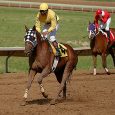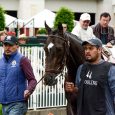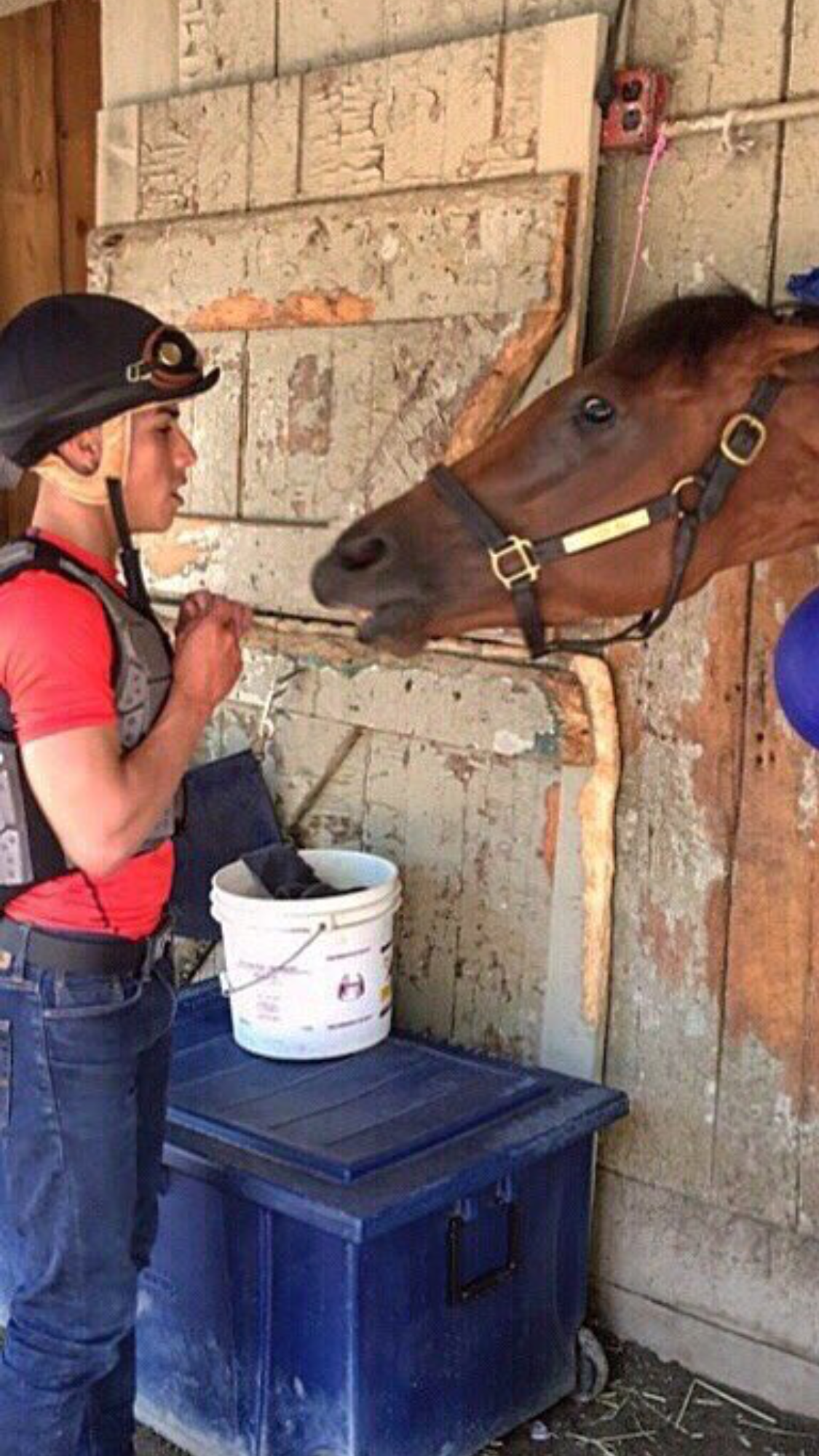
Jock Irad Ortiz Jr. and Lady Eli are scheduled to reunite on the racetrack when they compete in the Grade II Woodford Reserve Ballston Spa at Saratoga on Aug. 27 (photo via Irad Ortiz Jr.).
There is so much excitement and anticipation in the Sport of Kings this time of year. While most eyes are on Saratoga and Del Mar and the division leaders and budding stars are sorting themselves out, something monumental is set to take place at the historic and iconic Saratoga Race Course — a fitting place for a significant moment in our game’s history.
Although there is potentially quite the equine achievement before us, there is not nearly enough talk about it, nor recognition of what it means to our game and the breed, as there should be. Perhaps people are waiting for the outcome of the Ballston Spa to be run on the Travers undercard Aug. 27 to weigh in.
I don’t think that is necessary.
The ultimate outcome is not what is really important here. What is important is that Lady Eli is alive and, more than that, ready to return to the starting gate at the stakes level.
Lady Eli is a special kind of horse. She showed that both on and off the racecourse. Despite her being an undefeated star, it would be hard to argue that her off-track accomplishments do not outweigh her lofty on-track ones. Had it not been for a late-season, somewhat unexpected, surge by Take Charge Brandi, Lady Eli surely would have been named the American Champion Two-Year-Old Filly in 2014, despite having not raced on dirt. Yet, despite losing the Eclipse Award that season, she was still highly regarded, a fan favorite and somewhat of a people’s champion.
Lady Eli was foaled on Feb. 2, 2012. After being bred by Runnymeade farm and Clay Catesby, she was purchased by Jay Hanley and Sheep Pond Partners and turned over to trainer Chad Brown. She was nothing short of spectacular racing and went six-for-six, with wins in the Breeders’ Cup Juvenile Fillies Turf and the Belmont Oaks. She earned $1,449,800 and she appeared to be just getting started.
Laminitis is a dreaded disease in horse racing. The mere word carries the fear the word “cancer” does in humans. You just don’t want to hear it, see it or feel it. It’s a major cause of death in horses. It’s difficult and problematic to treat and the prognosis is not usually good.
The main goal when a horse is stricken with Laminitis, is survival — racing and even breeding are merely afterthoughts. Perhaps Laminitis is most infamous for claiming the life of Barbaro, who was stricken with the horrible condition following his breakdown in the first few seconds of the 2006 Preakness Stakes.
Barbaro was a great patient and a smart horse, crucial factors in any horse overcoming a serious injury or ailment. He also received the best care available and a lot of love. For a while, it looked as though he’d survive, with racing again never even being a consideration. However, even with the best of care and a lot of love and prayers, laminitis robbed us of Barbaro and what could have been, as it has robbed us of so many other horses.
The racing world was shocked — although it should not have been, as by now we should know this game is about the highest highs and the lowest lows (often when neither is expected) — when it was announced Lady Eli was showing signs of laminitis. It was reported — after one of her highest highs, a victory in the $1 million Belmont Oaks — that she had stepped on a nail on the way back to Brown’s barn. The nail was removed, and it was thought not to be a serious problem.
She had stepped on the nail with her front left hoof and, about a week later, she started showing signs of laminitis in her right foot, likely because she was favoring the left one following the nail incident. Shortly afterwards, the left foot started showing signs of laminitis and worry turned to deep concern.
Overcoming laminitis in one foot is difficult enough, two feet is next to impossible. Brown took the news as hard as anyone… and it was taken pretty hard by all of Lady Eli’s connections. I received a message from Brown’s father following an inquiry as to how things were going. Chad was quarterbacking the team he put together to save the filly’s life and, according to his dad, not sleeping very well.
Racing was not really in the forefront of anyone’s mind at the time. Options were open, but survival was what it was really about. Considering how Brown had spoken about Lady Eli in the past — using phrases like “breathes different air” — and knowing his love for horses and his craft and the special place this filly held in his heart, his reaction was no surprise.
At the time, Brown stated:
“Thankfully, we have assembled the best possible team of veterinarians and farriers to stabilize her and assist her through these difficult times.”
Owner Jim Hanley said:
“Hopefully she can take her fighting spirit and put it into fighting this.”
And fight Lady Eli did.
To understand the battle, the odds and, most significantly, the pain, you have to know exactly what laminitis is. Laminitis is a painful inflammatory condition of the tissues (laminae) that bond the hoof wall to the (pedal) coffin bone in the horses hoof. It is considered a serious and crippling disease and it is extremely painful, not to mention often fatal.
Perhaps the condition is better understood visually. See the illustrations below and remember Lady Eli had to battle this in both front hooves.
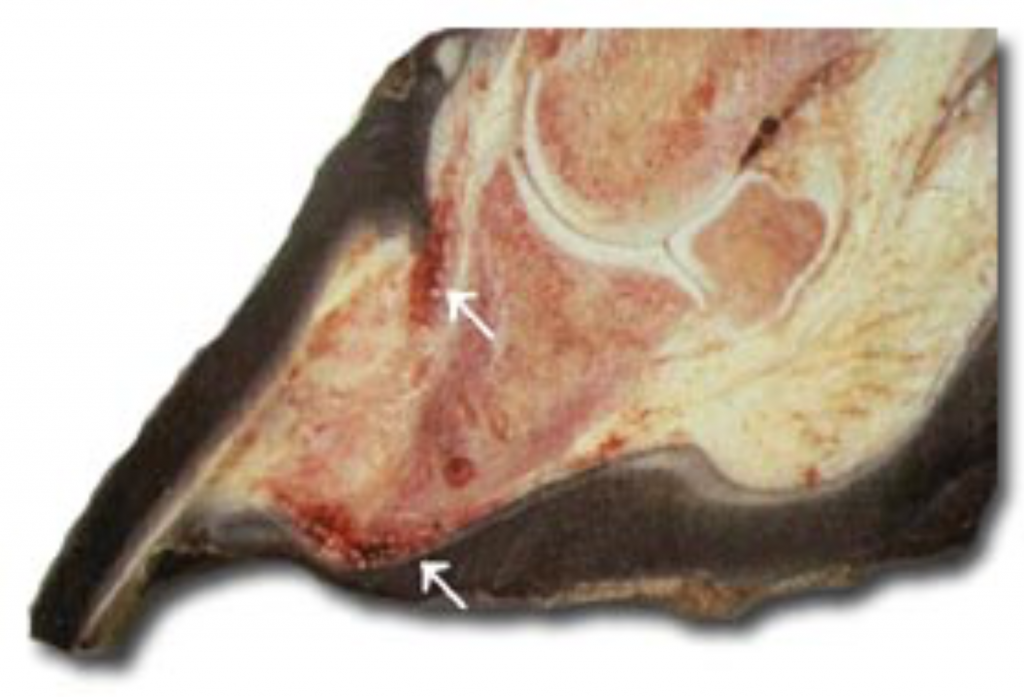
(Photo via American Veterinary Medical Association)
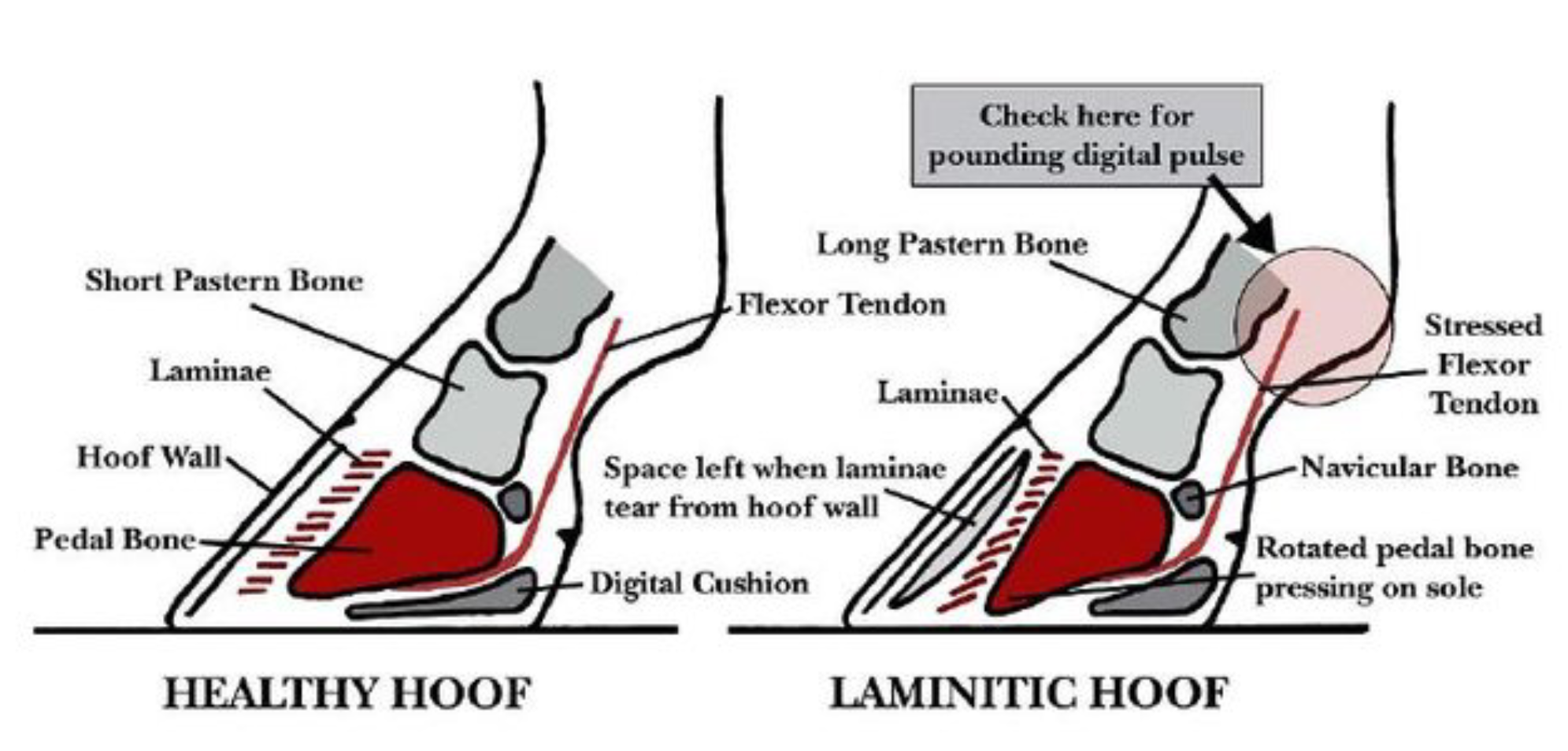
(Illustration via EquiAds)
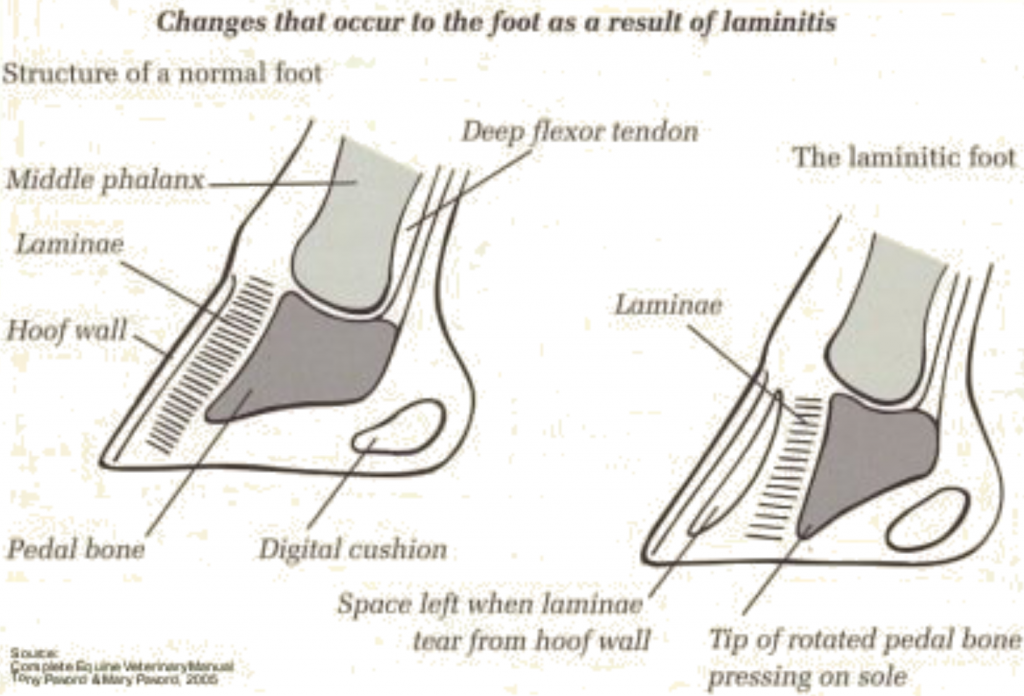
(Illustration via EquiAds)
Now that you can see what laminitis is and what it does, you can better understand what Lady Eli and her team were up against. This filly has a fighting spirit, remained a good patient and, eventually, she turned the goal of survival into the goal of returning to training and ultimately the racetrack.
To survive the battle was an accomplishment. To return to training and train at a level prompting Chad Brown to point her directly to stakes competition is nothing short of remarkable! This is an equine comeback for the books, regardless of where Lady Eli finishes in the Grade II Woodford Reserve Ballston Spa.
Also noteworthy is, for a while, it was believed that Tepin might show up in the same race, yet that news did not seem to deter Chad Brown or Lady Eli’s connections from their return goal at all. Tepin won’t be in the gate for the Ballston Spa, but all indications are that Lady Eli will be.
I recently had a chance to touch base with both Steve Rushing, jockey Irad Ortiz Jr.’s agent, and Ortiz himself regarding the status of Lady Eli. Their enthusiasm is contagious.
Rushing, who is a top agent and has handled riders like Edgar Prado and Ramon Dominquez in their primes, was to the point.
“We’re excited and can’t wait for her to run on the 27th,” he said.
Rushing knows his way around special horses and jockeys and has been instrumental in turning Ortiz into one of the best and most sought after riders in the country. Rushing said Lady Eli hadn’t missed a beat, and Ortiz has been on her in the morning during her comeback preparations at Belmont Park.
For his part, Ortiz beams when he talks about Lady Eli, calling her a “special filly” and saying “I love her.”
An enormous amount of credit is due Brown and his team for getting Lady Eli through this. The sleepless nights at the barn paid off and if Lady Eli returns even close to the level she was before, we’ll all be witness to one of the best equine comebacks and performances ever. In addition to the veterinary work and care, including love, that went into getting Lady Eli back to the track, just look at her works.
Lady Eli Worktab


Source: Equibase.
I don’t think I’ve ever seen this type of preparation go into a race. She’s special and deserves it and we may all just get a treat to remember come race day.

